|
|
|
Equipment
The 133rd Heavy Anti Aircraft Battery were trained to operate
the Q.F 3.7 Inch Mobile Anti Aircraft Gun, Q.F. meaning 'quick
firing' and was cable of firing 12 rounds per minute. The
'Mobile' guns enabled the battery to alter their position
for the principle element of surprising the enemy as well
as to reposition the guns to provide better defence if necessary.
These guns had a carriage and limber each towed by a separate
vehicle known as a Matador.
Mobile units were generally situated at aerodromes that were
considered of greatest operational importance, therefore,
they were at high risk of being attacked by the enemy. As
Anti Aircraft guns are highly vulnerable in action, full use
was to be made of their mobility and capacity to take up alternative
positions.
|
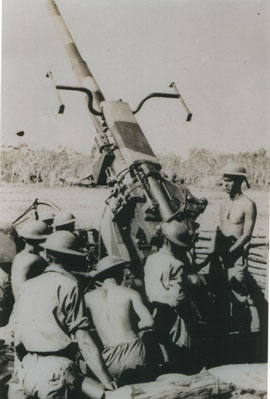 |
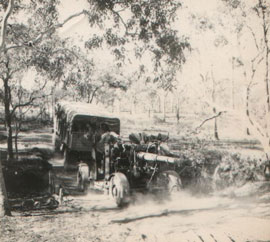 |
|
Photos Taylor and
Chaffey collection.
|
|
The gun and mounting weighed 9.6 ton and the bore of the
gun was approximately 185 inches long with a muzzle velocity
of 2600 feet per second. It had a ceiling rate of 32,000 feet
and fired a projectile weighing 28lb, the whole shell weighed
a total of 50lb and was 38 inches in length.
Les Keelan with shell, Keelan collection.
|
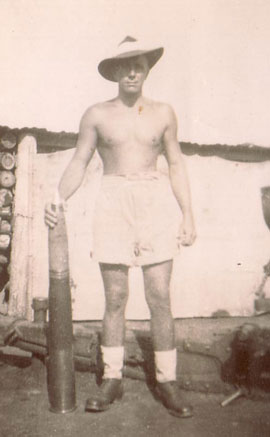 |
|
Learning to operate the guns and instruments in an Anti Aircraft
Battery was very complex and would require a great deal of
knowledge.The determination of the firing data for an AA gun
may be considered as being done in stages. They needed to
establish the present location of the aircraft. Then they
were required to determine the future position of the aircraft
at the time the shell will reach it. After that they must
determine in what manner to aim the gun, after allowing for
ballistic factors, in order that the shell may reach the aircraft
at its predicted future position.
Initially, the plane had to be identified as friendly or
foe and this was the role of the Air Sentries better known
as 'Spotters'. Any approaching enemy aircraft would be immediately
reported to the men on a telescope for positive identification.
This position was called Toc/I an abbreviation for Telescope
Identification.
|
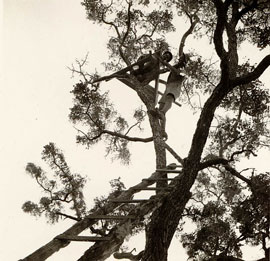 |
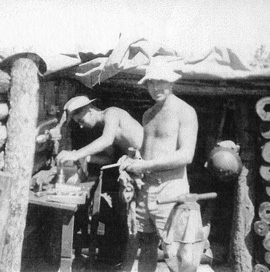 |
|
Spotters tree. Allen collection
|
Toc/I, cleaning instrument
Nilsson collection
|
| Once identified as an enemy aircraft the Toc/I would report
the bearing and angle of the planes to the Height and Range
Finder.The Height Finder could then relay a more accurate height
to the instrument known as the Predictor. The GL short for Gun
Laying Radar would be also constantly tracking the Enemy Aircraft
and providing its information to the Predictor as well. |
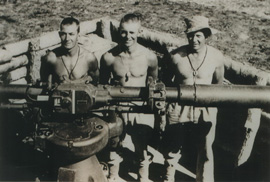 |
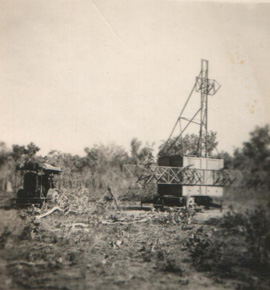 |
|
Height and range Finder,
Chaffey collection
|
Radar, Howes collection
|
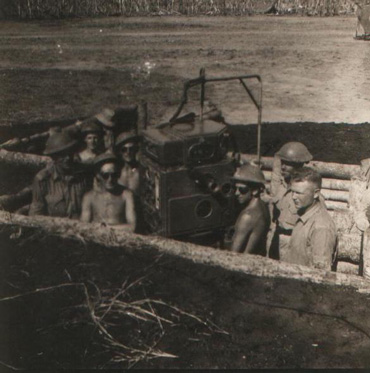 |
|
Predictor, Taylor collection
|
|
The predictor was a calculating machine, which could measure
movements of the target and calculate a future position.The
Predictor was the brain of AA gunnery, one of the operators
told me that,
"the predictor could be best described as a mechanical
computer, manufactured many years before microchips were invented".
It also provided ballistic data to pass the trajectory through
and burst the shell at the future position. All the resultant
information from the predictor was transmitted instantaneously
and constantly to the dials on the guns.
The probability of shooting down an aircraft with gunfire
was very small. A more vital role for AA gunnery was to produce
enough fire to cause the enemy aircraft to take evasive action
or even abort the bombing run so that the bombing was ineffective
in achieving its objective.
The men had to be highly trained to operate the instruments
and work quickly and efficiently as a team, as an aircraft
will only be in danger for 30-second period. The aircraft
must maintain constant height, course and speed while aligning
his sights prior to releasing the bombs, this operation is
known as the "run up". It is at this stage that
the aircraft presented a favourable target to the Anti Aircraft
guns of defence and should produce its maximum fire effect
as the aircraft is obeying its assumptions.
|
Top
|
